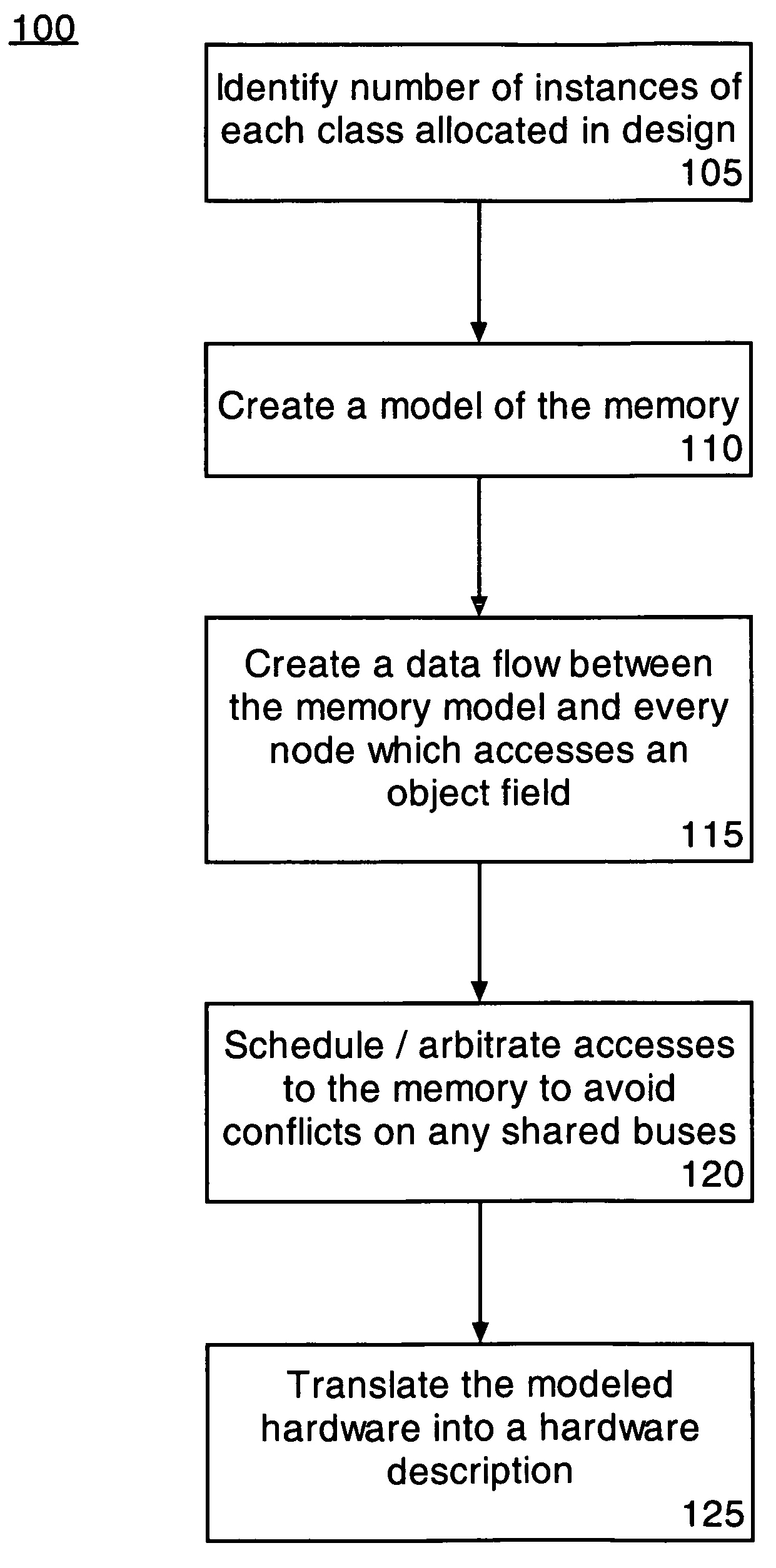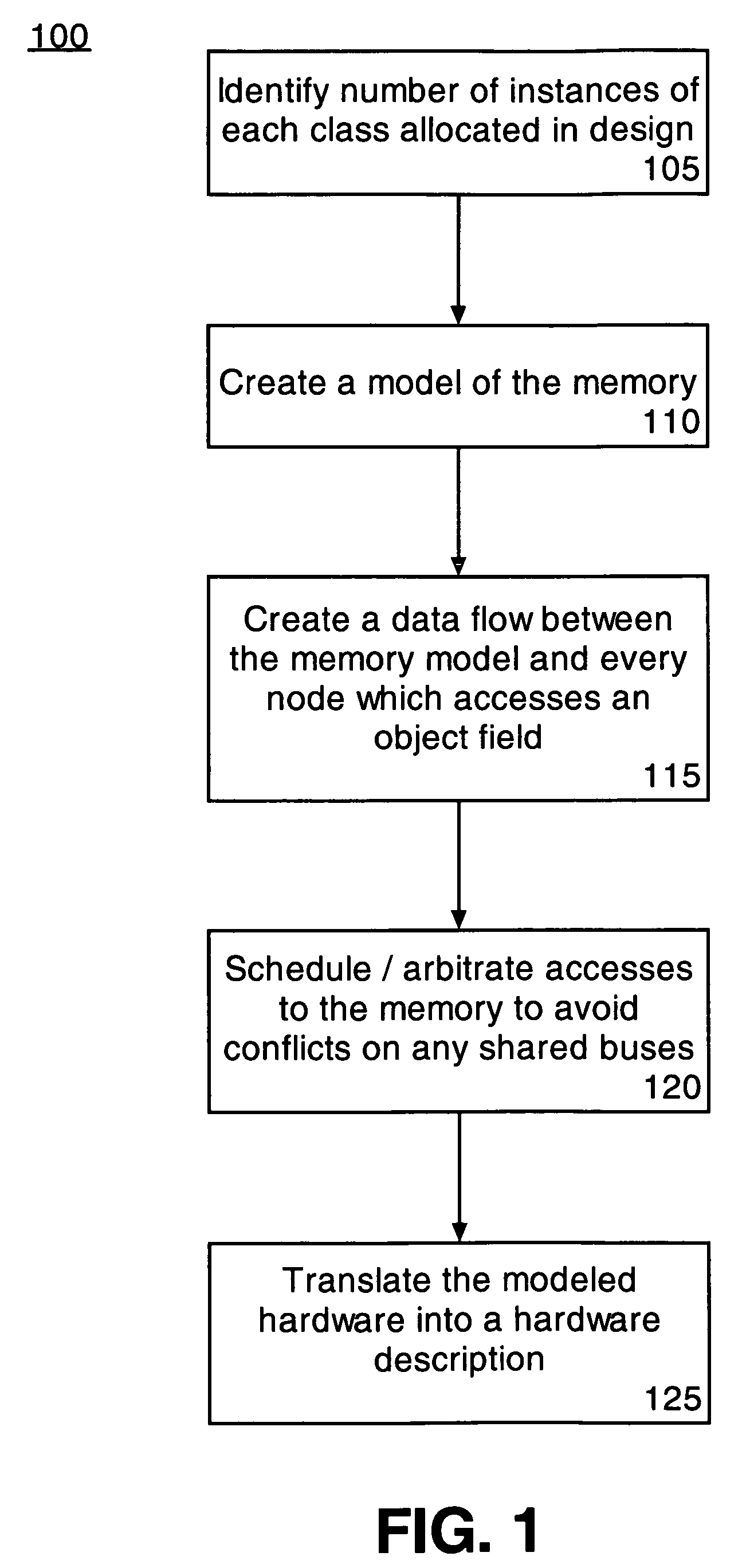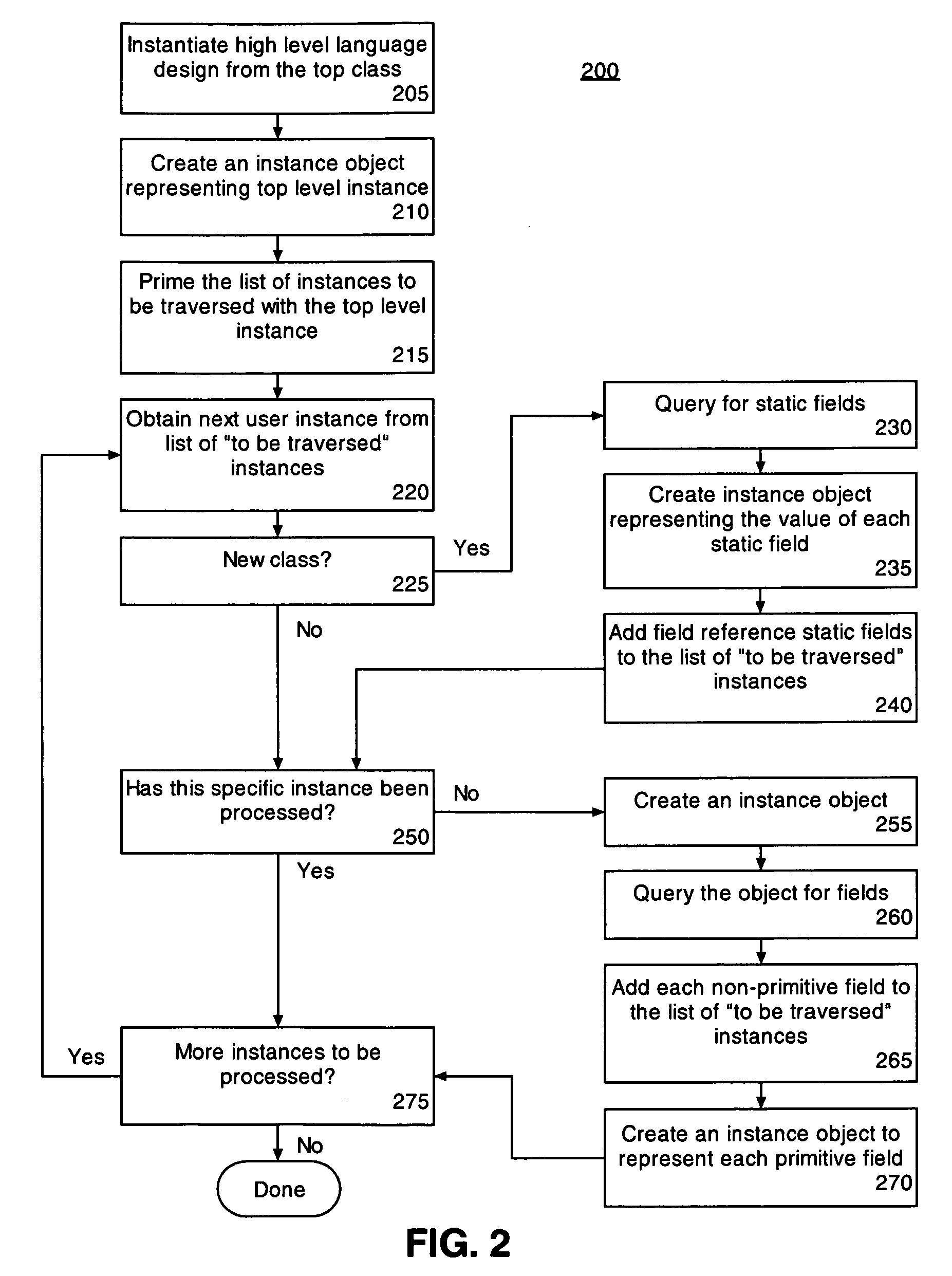Method of transforming software language constructs to functional hardware equivalents
a software language and construct technology, applied in the field of hardware design, can solve the problems of time-consuming and easy to error, disadvantages of specialized languages, and time required for developers to familiarize themselves with a different special purpose languag
- Summary
- Abstract
- Description
- Claims
- Application Information
AI Technical Summary
Benefits of technology
Problems solved by technology
Method used
Image
Examples
Embodiment Construction
[0030]The invention disclosed herein provides an automated solution for deriving a hardware description from a general purpose high level language design implementation of an integrated circuit (IC). According to the present invention, an algorithm to be implemented by an IC, which has been implemented in a high level language, can be transformed automatically and directly into a hardware description.
[0031]Prior to generating a hardware description from the high level language design, the source code is transformed into a usable format such as a flow-graph constructed of nodes and directed edges. The flow-graph provides a language independent model designed to be neutral with respect to both software and hardware. From the flow-graph, an equivalent hardware description language specification can be derived. Through an analysis of the flow-graph, as will be described herein in greater detail, one or more of a variety of optimizations can be applied to improve the design of hardware r...
PUM
 Login to View More
Login to View More Abstract
Description
Claims
Application Information
 Login to View More
Login to View More - R&D
- Intellectual Property
- Life Sciences
- Materials
- Tech Scout
- Unparalleled Data Quality
- Higher Quality Content
- 60% Fewer Hallucinations
Browse by: Latest US Patents, China's latest patents, Technical Efficacy Thesaurus, Application Domain, Technology Topic, Popular Technical Reports.
© 2025 PatSnap. All rights reserved.Legal|Privacy policy|Modern Slavery Act Transparency Statement|Sitemap|About US| Contact US: help@patsnap.com



